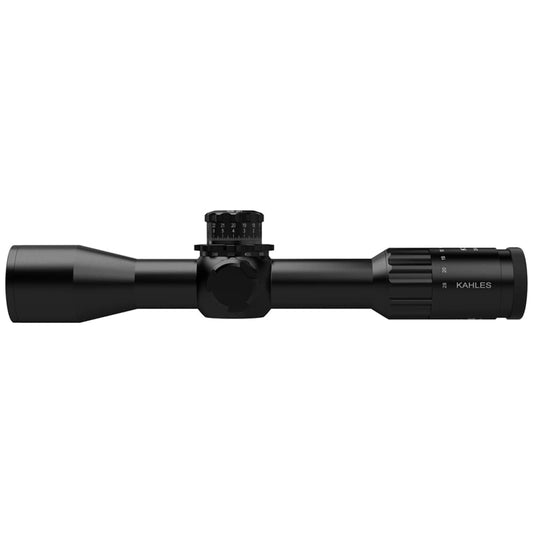

Kahles K328i 3.5-28x50mm CCW SKMR4+ Riflescope delivers precise shooting capabilities with an impressive 8x zoom range. The first focal plane reticle allows for accurate holdovers at any magnification, simplifying target acquisition at varying distances. This riflescope features a robust construction that withstands tough conditions while providing optimal clarity, even in challenging light. The twist guard technology on the windage turret prevents accidental adjustments, ensuring your settings remain intact throughout your shooting session.
Engineered for reliability, the Zero Stop function on the elevation turret allows for quick returns to your original zeroing. The clearly defined clicks give you confidence as you make adjustments, enhancing your shooting accuracy. With a comfortable eye box and a wide field of view, this scope is designed for prolonged use, making it an ideal choice for both competitive shooters and hunting enthusiasts.
Features:
- ENHANCED CLARITY for optimal target visibility in varying light conditions.
- WIDE FIELD OF VIEW allowing for better tracking of moving targets.
- ZERO STOP FUNCTION ensures quick return to zero, enhancing shooting accuracy.
- TWIST GUARD TECHNOLOGY prevents unintentional adjustments during use.
- FIRST FOCAL PLANE RETICLE enables accurate holdovers at any magnification level.
- RELIABLE ADJUSTMENT CLICK ensures confidence in your turret settings.
- COMFORTABLE EYE BOX allows for easy aiming, reducing fatigue during long sessions.
- PATENTED PARALLAX ADJUSTMENT for precision shooting from 20m to infinity.
Technical Specifications Table
| Specification | Details |
|---|---|
| Magnification Range | 3.5x - 28x |
| Lens Diameter | 50mm |
| Weight | 36.7 oz |
| Exit Pupil | 1.8mm - 7.4mm |
| Eye Relief | 3.62 in. |
| Field of View | 42.9ft. - 5.4ft. @ 100yds. |
| Illuminated Reticle | Yes |
| Turret Adjustment Click Value | .1 MRAD |
What’s in the Box?
- Lens covers
- Padded case
- Neck strap
Customer Reviews
"The clarity on this scope is unreal! It’s changed my long-range shooting game." - Mark T.
"Easy to adjust and super reliable. Highly recommend!" - Sarah L.
FAQ
How does the K328i perform in low-light conditions? The K328i is designed with advanced optical technology that enhances clarity, even in low-light situations, making it ideal for dawn and dusk shooting.
Is the scope easy to mount and adjust? Absolutely! The K328i features a user-friendly design with clearly defined clicks for turret adjustments, ensuring you can focus on precision shooting without hassle.
Similar Models
Looking for other top-tier optics? Explore our extensive Kahles lineup, including models like the Kahles K624i for unparalleled versatility or the Kahles K16i for compact and lightweight performance. Discover our full collection and find the perfect optic tailored to elevate your shooting precision!
You May Also Like
Here’s some of our most similar products people are buying. Click to discover trending style.










